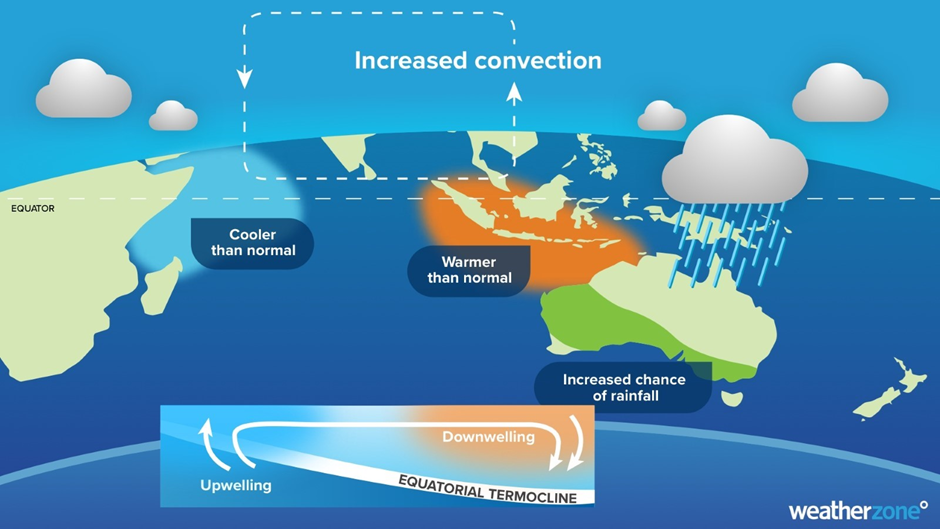
Australia could be facing a soggy spring after the Bureau of Meteorology declared an increased chance of a negative Indian Ocean Dipole (IOD) in the coming months.
A negative IOD would see ocean surface temperatures in the Indian Ocean drive moisture-heavy air towards Australia.
They typically cause above-average rain over the nation’s south and south-east.
READ MORE: Jess Fox, Eddie Ockenden named Paris 2024 opening ceremony flag bearers
Sea surface temperatures would need to be at -0.4 degrees or lower for eight weeks before the Bureau declares a negative IOD.
“A negative IOD can have a significant impact on Australia’s weather during winter and spring,” Weatherzone said.
The moisture-laden air can fuel “vast north-west cloudbands”, which bring widespread rain, thunderstorms, potential flooding, and snow.
It can also bring below-average daytime temperatures, though nights are actually warming than average due to the cloud cover trapping heat.
READ MORE: ‘Crazy start to the trip’: Aussie BMX star has gear stolen in van break-in
“Phases of the IOD have impacted Australia’s weather during the last three years, with negative events occurring during 2021 and 2022, while in 2023 we saw a strong positive IOD,” Weatherzone said.
“As such, 2021-2023 is tied with 1996-1998 as the longest stretch in which the IOD was observed to be in a non-neutral state.
“If we were to see a negative IOD develop in 2024, this would become the longest stretch we have seen the IOD in a non-neutral state since reliable records of the IOD began in 1960.”
Watch every moment, every medal of the Olympic Games Paris 2024 live and free on Channel 9 and 9Now. Plus, every event ad-free and in 4K on Stan Sport.
links to content on ABC
9News





